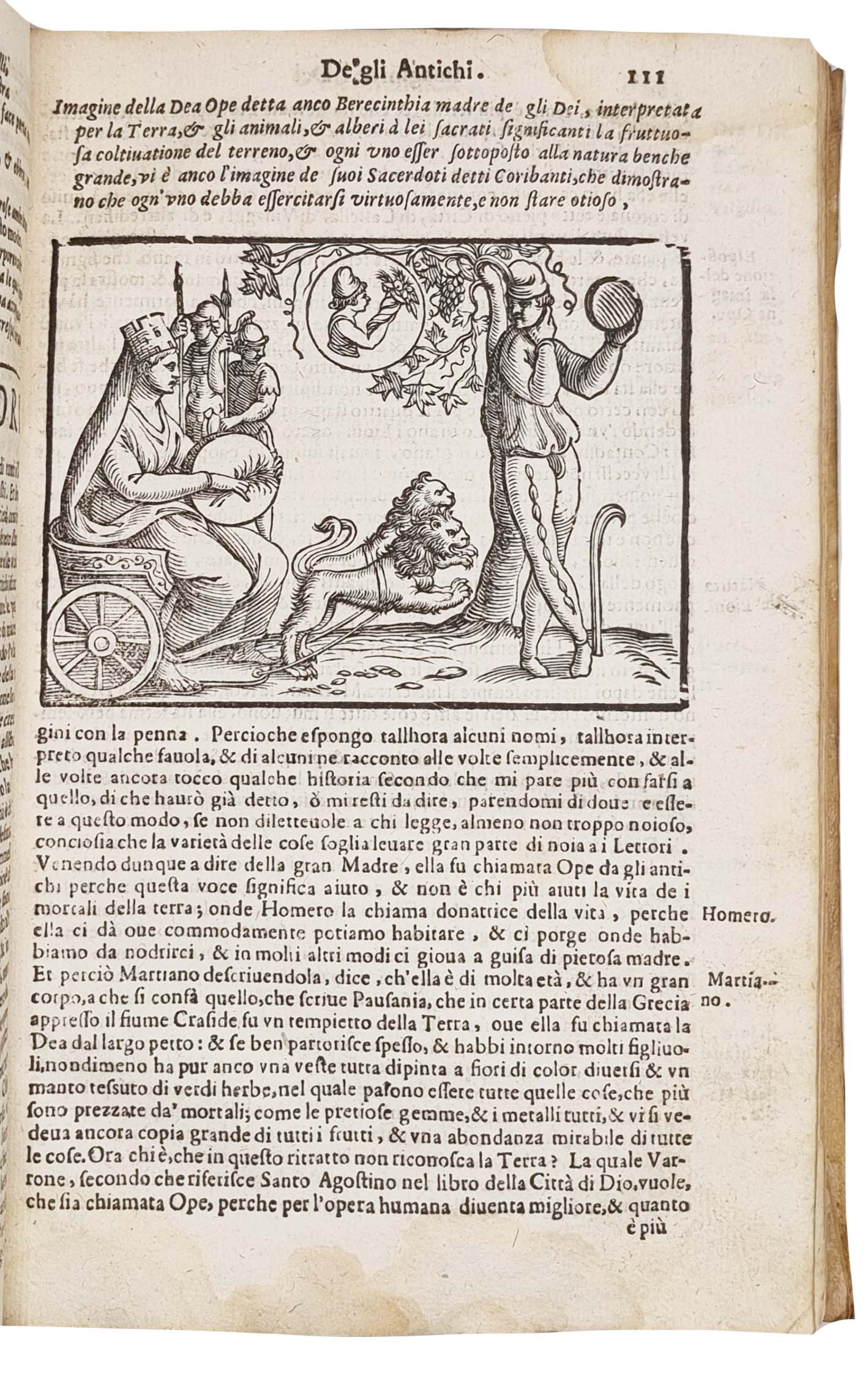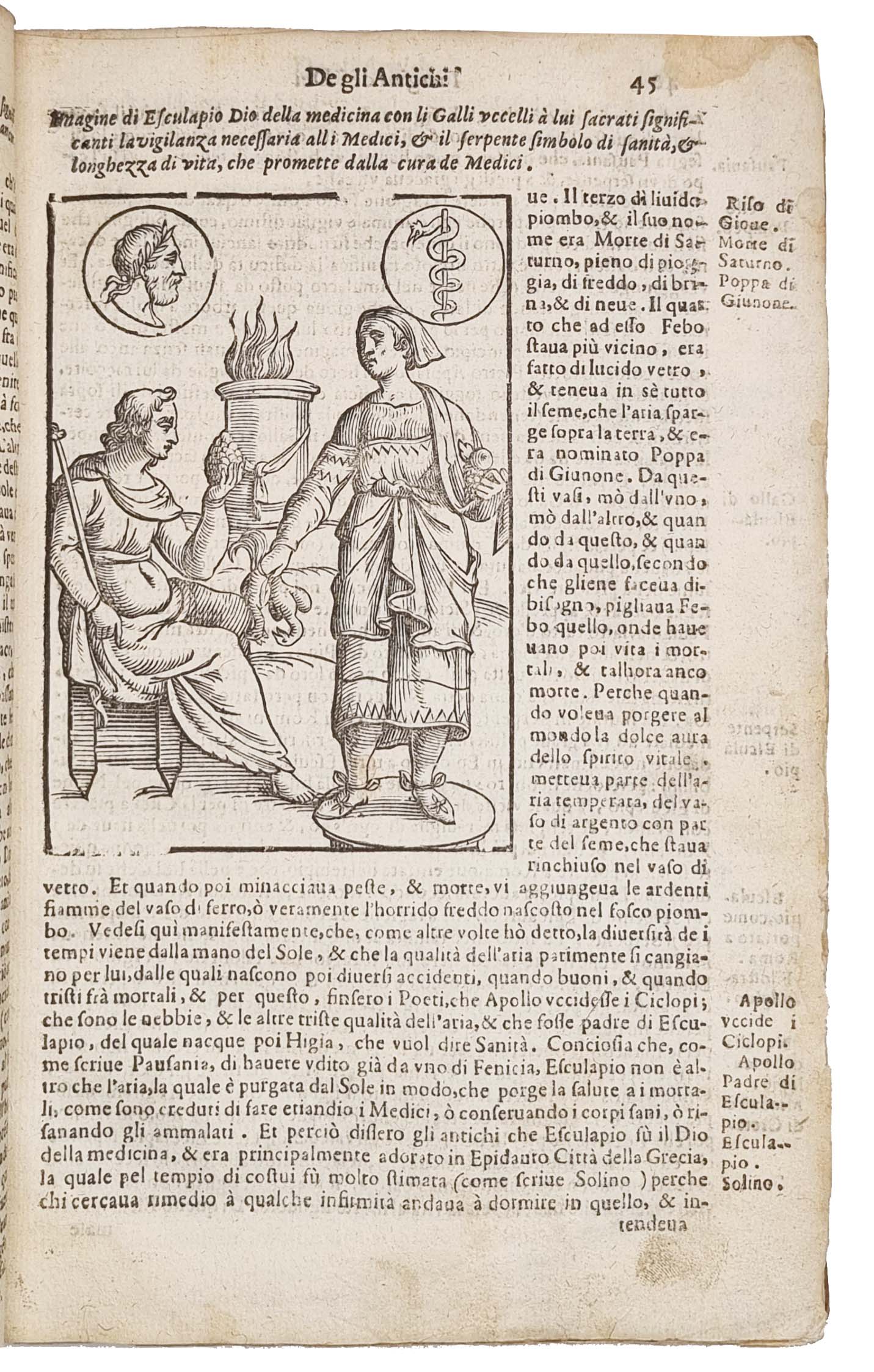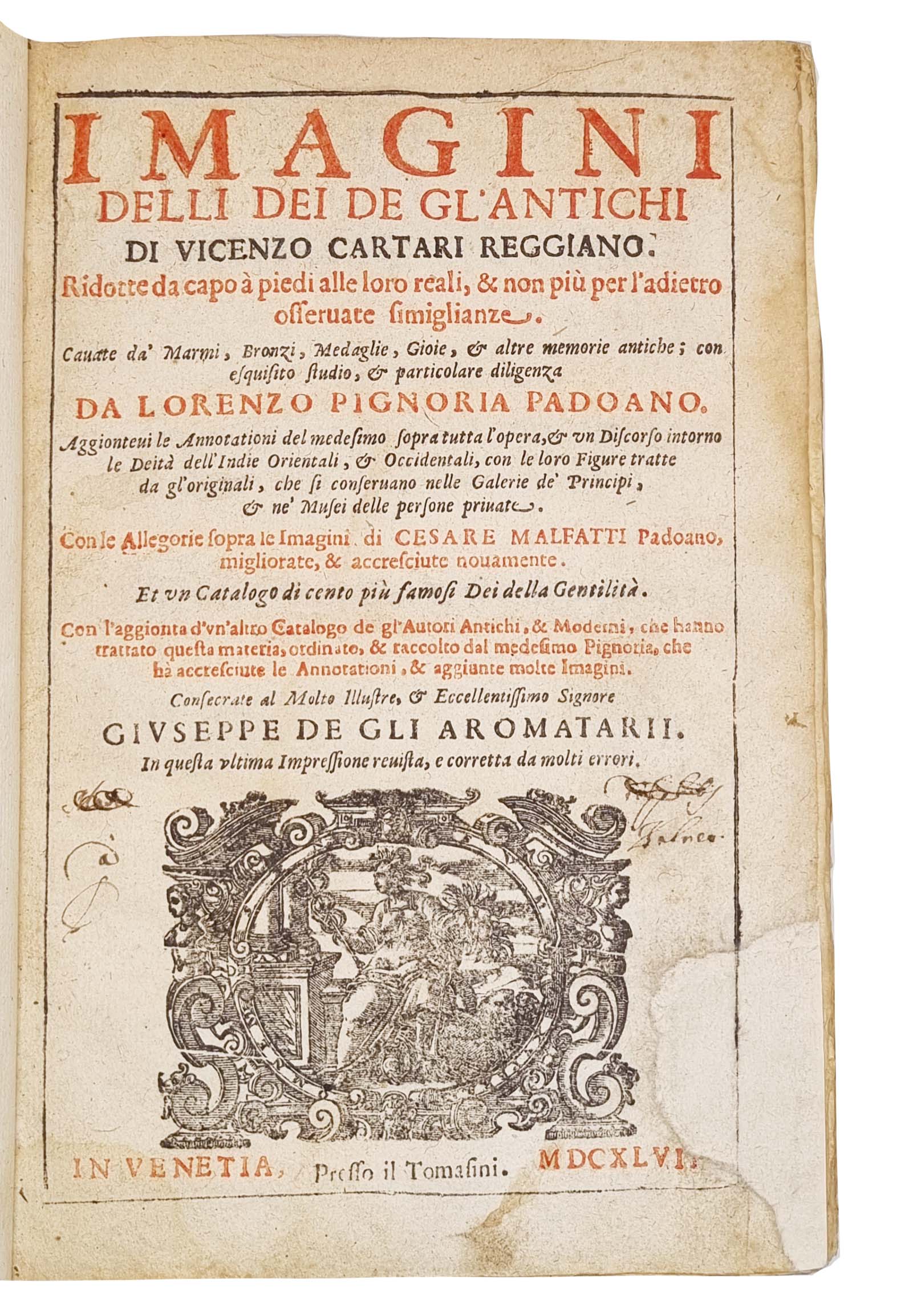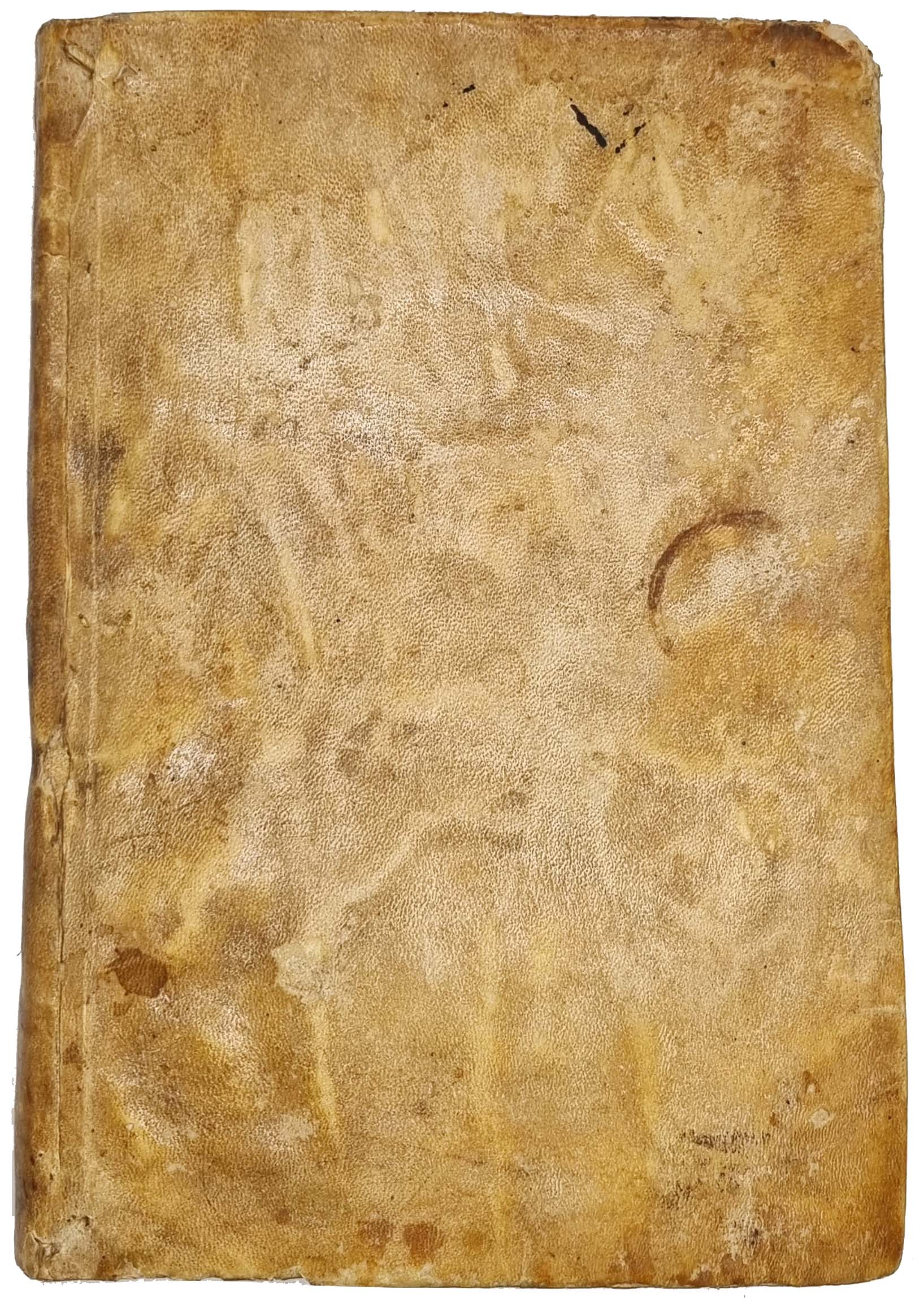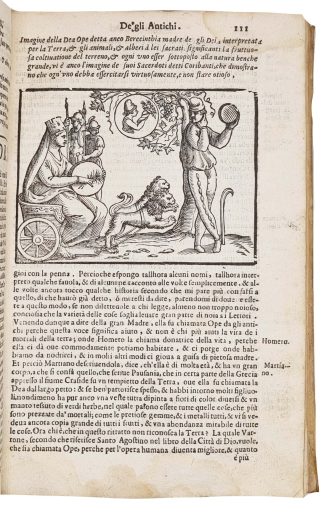CARTARI, Vincenzo.
Imagini delli dei de gl’antichi
Venezia, Cristoforo Tomasini, 1647£1,950.00
4to, pp. (xxiv) 400 + 2 folding plates depicting the structure of the universe, the gods Belos, Semiramis, and Sirofanes’s son. Roman and Italic letter, t-p in red and black with printer’s device, woodcut floriated initials, typographical ornaments, ornated headpieces and tailpieces. Numerous half to full-page woodcuts, some within charming typographical border, depicting Latin, Greek, Mexican, Indian and Japanese deities, antiquarian objects and artefacts. T-p a bit yellowed with repair to lower outer corner affecting frame, light age yellowing, intermittent and mainly marginal minor waterstains and fingermarks, tiny worm trail to 4 ll. and tiny ink spots to one fol. just touching a few words (not affecting reading), blank fore edges of a few ll. torn in press (no loss). A good copy in contemporary vellum, later endpapers.
A good copy of Cartari’s richly illustrated encyclopaedia of classical iconography, containing fascinating appendixes concerning deities of the West and East Indies by the Italian priest and antiquarian Lorenzo Pignoria (1571-163). This edition is considered as “the most complete” (Brunet): it was revised and corrected from the previous of 1626, the blocks were recut, and it includes two new woodcuts of the “creator god of the Egyptians” (p. 81) and of three cupids (324).
Vincenzo Cartari (c. 1531 – after 1571) was an Italian mythographer and diplomat, author of the first modern translation of Ovid’s fasti. Born at Reggio Emilia, Cartari lived and worked in the entourage of the Dukes of Este at Ferrara. ‘Images of the gods’ is his masterpiece, and one of the most widely read handbooks of ancient mythology of the Renaissance. First published in 1556 without illustrations, this work went through at least 25 editions in different languages. The first illustrated edition appeared in 1571, with woodcuts by Bolognino Zaltieri. This edition contains a different set of woodcuts realised by Filippo Ferroverde under the direction of Pignoria for his 1615 edition. As the editor criticised Cartari for relying only on literary sources, he designed these new images to include reproductions of antiquarian objects, particularly intaglios, cameos, medals and reliefs.
Pignoria’s appendixes to Cartari’s work (first published in 1615 and 1624) are permeated by the new 17th century interest in collecting antiques and exotic artefacts. The first two, ‘Annotations’ and ‘An addition’ illustrate a curious selection of “true and real images of the gods”: these are ancient finds, such as statues, coins, cameos and exotic objects, which belonged to Pignoria’s collection, or that he could see in Padua, Rome and France. The third section, titled “Images of the gods of the Indians”, is the most innovative: extending the discussion to divinities from all over the world, it represents a step forward in the development of early modern ethnographical studies. Pignoria analyses the Aztec divinities of Mexico and Peru, remarkably depicting original idols brought from the New World and reproducing illustrations from the Codex Vaticanus 3738, one of the earliest testimonies of American art. Descriptions of Indian and Japanese gods – e.g. the elephant-headed Ganesha, or Amida, a “foreign” god introduced to Japan by the Chinese Xaca – are derived from Jesuit travel accounts, and many pages are dedicated to describing Japanese idols and statuettes. Interestingly, Pignoria believed that the inhabitants of the newly discovered regions “conformed the way of manufacturing their idols to the images of Egyptian gods”, and illustrates curious comparisons between American, Indian and Egyptian religious iconographies.
Cartari’s aim was to provide artists with a complete mythological-iconographic repertoire of Greek and Roman gods, heroes and allegories. ‘Images of the gods’ begins with an introduction on the origins of religion and on the structure of the universe, whose spheres are well illustrated in a fold-out plate. Cartari describes all deities in order, according to their association with general principles governing the cosmos, their powers and roles. Minor mythological figures are gathered around the main god to which they are linked.
USTC 4018668; Sabin 11104; Alden 647/46. See Harward It., 108; Graesse II, p. 56; Brunet I, p. 1601. Not in BM STC It C17.
USTC 4018668; Sabin 11104; Alden 647/46. See Harward It., 108; Graesse II, p. 56; Brunet I, p. 1601. Not in BM STC It C17.In stock


